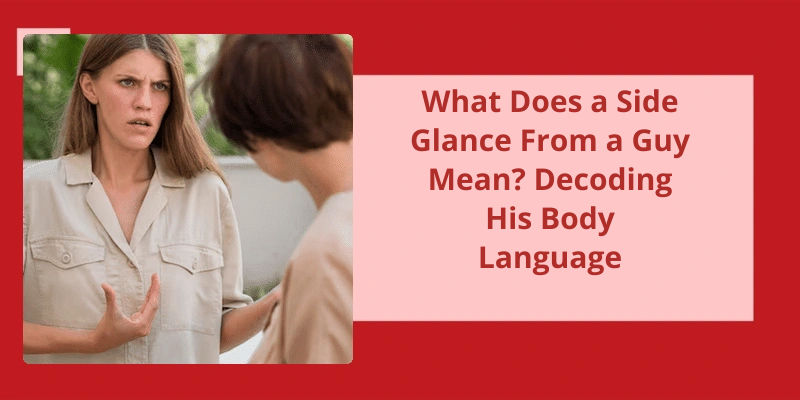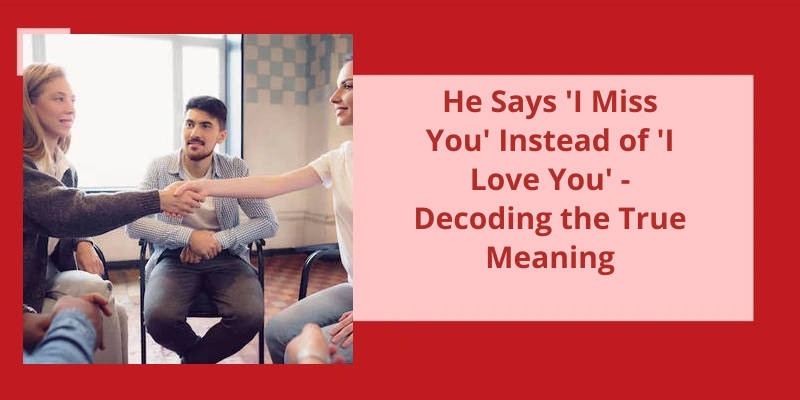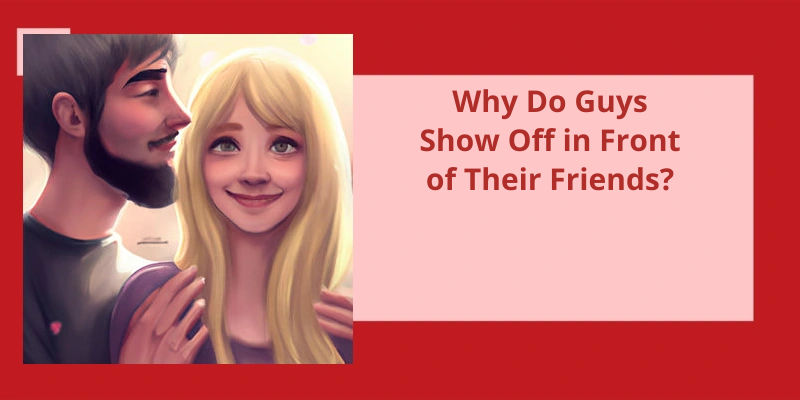The actions and gestures of individuals often communicate more than words can ever express. In social situations, a simple look or glance can carry a wealth of meaning, conveying a range of emotions and intentions that may not be immediately obvious to those around them. One such gesture that’s puzzled individuals for generations is the side glance from a guy. While seemingly innocuous at first sight, this non-verbal cue can be loaded with hidden meaning, sparking curiosity and confusion in equal measure. From expressions of doubt and shock to outright scorn and criticism, the side eye can be a telling sign of a guy's thoughts or feelings towards someone else. But what exactly does a side glance from a guy mean? Let's delve deeper into the nuances of this enigmatic gesture to uncover it’s true meaning.
Why Does He Look at Me Sideways?
But why do people look at others this way? There are many possible reasons. It could be that they’re attracted to you but don’t want to be obvious about it. Or, they might be suspicious of you and want to keep a watchful eye on your actions. Perhaps they’re simply shy and don’t feel comfortable making direct eye contact.
Another possibility is that the person is trying to convey a message without saying anything directly. For example, if you’re in a meeting and someone gives you a sideways glance, it could mean that they disagree with what you’re saying or that they’ve a different idea they want to share. In this case, the sideways glance is a subtle way of communicating a message.
A sideways glance could also be a sign of deception or dishonesty. When people are lying, they often avoid direct eye contact because they feel guilty or uncomfortable. By giving a sideways glance, they may be trying to hide something or deflect attention away from themselves.
Ultimately, the best way to understand why someone is giving you a sideways glance is to ask them directly. This can be difficult in some situations, but it’s often the surest way to get an accurate answer. By asking, you can open up a dialogue and start to build a stronger relationship based on trust and honesty.
Now that we’ve established what side looking means, let’s delve deeper into it’s significance in various contexts. From body language to communication, this simple act of glancing to one side holds valuable clues and insights. In the following sections, we’ll explore the different implications of side looking and what it can reveal about a person or situation.
What Does Side Looking Mean?
Side looking refers to the act of glancing or looking in a direction that’s off to ones side. This type of glance is often made in a quick and casual manner, as opposed to a more intentional or focused look.
A direct gaze can sometimes be perceived as aggressive or confrontational, especially in certain cultural contexts. By glancing to the side, one can signal a more relaxed and open demeanor, preventing potential misunderstandings or conflict.
This can help to build rapport and facilitate more comfortable and natural social interactions.
However, side looking can also be a signal of discomfort or anxiety. When people are feeling nervous or uncertain, they may avoid eye contact or look away from others as a way of self-soothing or reducing their level of stress. This can be an important cue for others to pick up on, as it may indicate that someone is in need of reassurance or support.
By paying attention to these subtle cues, we can gain a better understanding of our interactions with others and improve our ability to communicate effectively.
Techniques for Interpreting Nonverbal Cues Like Side Glancing
- Observing eye movements, including side glances and gaze direction
- Noticing changes in posture or body language
- Listening closely to tone of voice and inflection
- Watching for micro-expressions or subtle changes in facial expression
- Noting changes in breathing patterns or fidgeting
- Considering the context and environment in which nonverbal cues are occurring
Now that we know what a sidelong glance is, we can explore the various meanings and interpretations associated with this type of look. Whether it’s a fleeting glance meant to convey disapproval or a subtle indication of attraction, sidelong looks can communicate a lot without ever saying a word. Let’s take a closer look at what these sideways glances might mean and how they’re used in different contexts.
What Is a Sideways Glance?
A sideways glance, also known as a sidelong look or glance, refers to the act of looking at someone or something by moving ones eyes to the side. People may give sidelong glances to someone they don’t trust or dislike, or when they want to keep their thoughts or intentions to themselves. In some cases, a sideways glance may also convey a sense of flirtation or attraction.
However, it can also be easily misinterpreted, leading to misunderstandings or conflict.
In some situations, such as professional or social settings, giving a sidelong glance may be considered inappropriate or unprofessional. It’s important to be mindful of etiquette and social norms when using body language in different settings, and to be considerate of others feelings and perceptions.
To effectively use and interpret sidelong looks and glances, it’s important to read the context and body language of the person giving the look, and to be aware of any cultural or social norms that may influence it’s meaning. With this awareness and sensitivity, we can use sideways glances to effectively communicate and build stronger relationships with those around us.
How to Interpret Different Types of Sideways Glances in Different Social and Cultural Contexts.
- Direct eye contact with a slight sideways glance can indicate interest or attraction in western cultures.
- In some parts of Asia, a sideways glance with lowered eyes can signify respect or submission.
- A sharp sideways glance can convey distrust or suspicion in many cultures.
- In some social settings, a prolonged sideways glance can indicate boredom or disinterest.
- Among close friends and family, a playful sideways glance may be used to convey inside jokes or shared understanding.
- It’s important to consider the context and cultural norms when interpreting sideways glances in different situations.
As we’ve seen, the way we look and the direction of our gaze can communicate a lot about our thoughts and emotions. But body language is complex and nuanced, and a single gesture or expression can have many different meanings depending on the context. In this article, we will explore the various interpretations of looking sideways in body language, and how to better understand and use this nonverbal communication cue.
What Does Looking Sideways Mean in Body Language?
In general, body language is a powerful tool that can communicate a lot about a persons thoughts and emotions. Looking sideways is a form of nonverbal communication that can convey several different meanings depending on the context in which it’s observed.
For example, someone who’s nervous may look to the side frequently to avoid direct eye contact with the person they’re speaking to. This behavior could be a sign that they’re feeling anxious or uncertain about the conversation, or that they’re trying to hide something.
On the other hand, someone who’s distracted may also look to the sides frequently. In this case, the persons attention is likely being pulled in multiple directions, causing them to shift their gaze away from the speaker.
When someone looks away from the speaker, it can also indicate a level of comfort or submissiveness. This behavior may suggest that the person feels very comfortable in their surroundings and isn’t threatened by the conversation. Alternatively, it could be a sign of submission or deference to the person speaking, indicating that they consider themselves lower in status or importance.
Finally, looking askance is another form of looking sideways that can convey a sense of distrust or skepticism. This behavior suggests that the person isn’t fully convinced by what they’re hearing or seeing, and may be evaluating the situation or person with a critical eye.
To fully understand the meaning behind this behavior, it’s important to consider the context in which it’s observed and take into account other cues and signals from the speaker.






